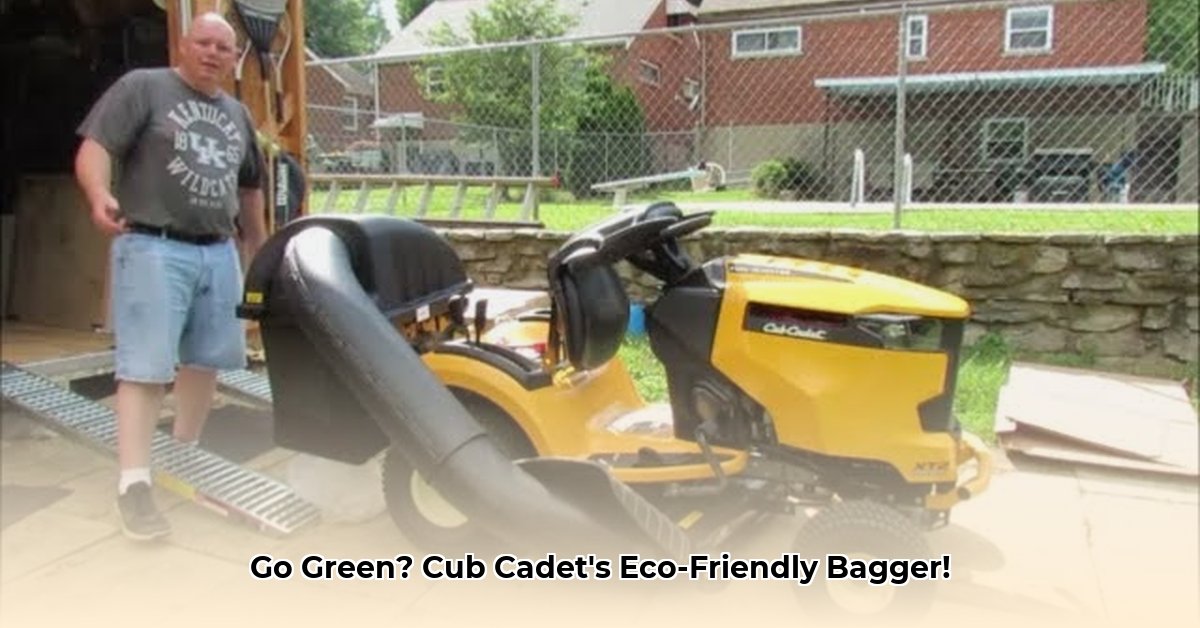
Cub Cadet Tractor Bagger: Thinking Green While Keeping Your Lawn Neat
The allure of a perfectly manicured lawn is undeniable. Crisp, even, and free of clippings, it represents a picture of order and tranquility. Cub Cadet tractor baggers offer a convenient route to achieving this aesthetic, efficiently collecting grass and leaving behind a pristine surface. But convenience often comes at a cost, and in this case, that cost might be environmental. This guide delves into the ecological implications of using a Cub Cadet bagger, comparing it to alternative lawn care practices and offering actionable steps toward more sustainable lawn maintenance. For more information on Cub Cadet baggers, see this helpful resource: Cub Cadet Baggers.
Core Insights:
- Bagging offers convenience but contributes to waste generation and nutrient loss.
- Mulching and leaving grass clippings provide significant environmental benefits.
- Sustainable choices, such as biodegradable bags and composting, can mitigate the impact of bagging.
The Appeal of a Bagged Lawn: More Than Just Aesthetics
The immediate benefit of a Cub Cadet bagger is clear: a neatly trimmed lawn, free from unsightly clippings. This is particularly appealing to homeowners who value a meticulously maintained outdoor space. Beyond aesthetics, there's a significant time-saving element. Bagging eliminates the arduous task of raking, freeing up valuable time for other activities. This convenience is a major draw for busy individuals. But, is this convenience worth the environmental trade-offs?
Environmental Trade-offs: What's the Real Cost?
The manufacturing process of both the Cub Cadet bagger and its accompanying collection bags consumes resources and energy. Transportation adds to the carbon footprint. Furthermore, the disposal of these bags in landfills contributes to waste accumulation and potential environmental pollution, including the release of microplastics. Don't forget the significant loss of nutrients when you bag your grass clippings. These clippings are rich in nitrogen, phosphorus, and potassium—vital nutrients for a healthy lawn—that are now lost instead of being returned to the soil. This nutrient depletion can lead to a less resilient lawn, potentially increasing the need for chemical fertilizers.
Bagging vs. Other Methods: A Sustainability Comparison
Comparing bagging to other lawn care methods reveals a stark contrast in environmental impact. Let's consider mulching and leaving grass clippings on the lawn.
| Method | Advantages | Disadvantages | Environmental Impact |
|---|---|---|---|
| Bagging | Neat lawn, convenient | Resource consumption, waste generation, nutrient loss | High |
| Mulching | Returns nutrients to soil, reduces fertilizer need | Initial messiness, potential thatch buildup | Low |
| Leaving Clippings | Minimal effort, natural fertilization | Potential untidiness, possible thatch buildup | Very Low |
Mulching finely chops clippings and distributes them evenly, returning valuable nutrients to the soil. Leaving clippings in place provides a similar benefit, enriching the soil naturally and minimizing waste.
Smart Ways to Reduce the Impact of Bagging
While mulching and leaving clippings excel in sustainability, many prefer the clean appearance of a bagged lawn. For those who choose bagging, several strategies can mitigate the environmental impact.
Utilize Biodegradable Bags: Opt for bags made from compostable materials to reduce landfill waste.
Compost Grass Clippings: Transform waste into a valuable garden resource, enriching the soil while diminishing landfill burden.
Maximize Bagger Efficiency: A high-efficiency Cub Cadet bagger minimizes fuel consumption and reduces the frequency of bag emptying.
Proper Maintenance: A well-maintained Cub Cadet bagger will use less fuel and function more efficiently, reducing the entire environmental impact.
The Bigger Picture: A Call for Further Research
The environmental footprint of lawn care equipment, including Cub Cadet baggers, is complex and warrants further investigation. A comprehensive life-cycle assessment (LCA) would provide a more precise understanding of the overall environmental impact. This research is essential for informing future designs and promoting environmentally responsible lawn care practices.
Conclusion: Striking a Balance Between Aesthetics and Sustainability
The choice between bagging, mulching, or simply leaving clippings depends on individual priorities. This guide aims to equip you with knowledge to make an informed choice, allowing you to create a beautiful lawn while minimizing your environmental footprint. A healthy planet and a well-maintained lawn are not mutually exclusive; they can coexist through thoughtful and responsible lawn care.